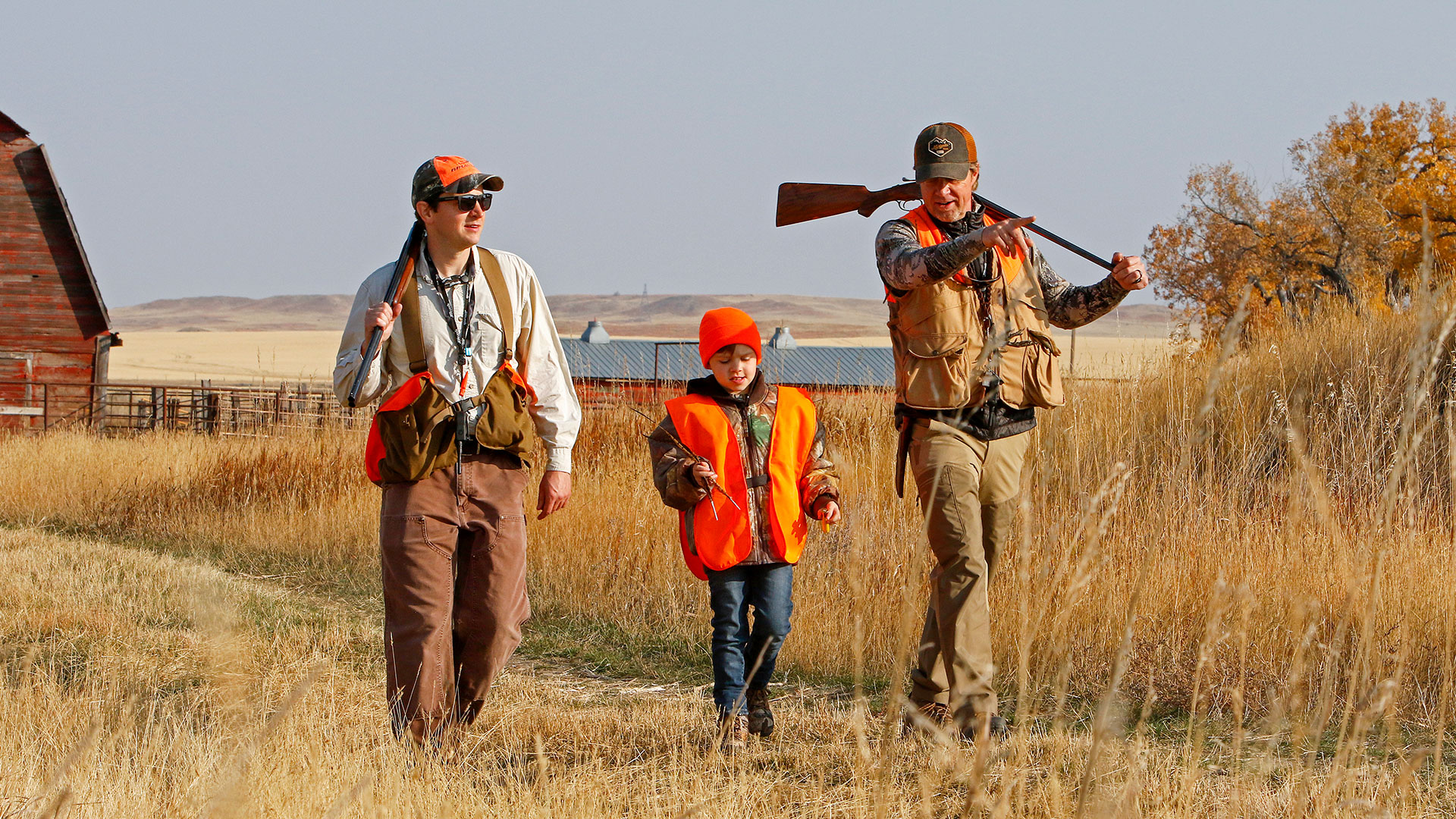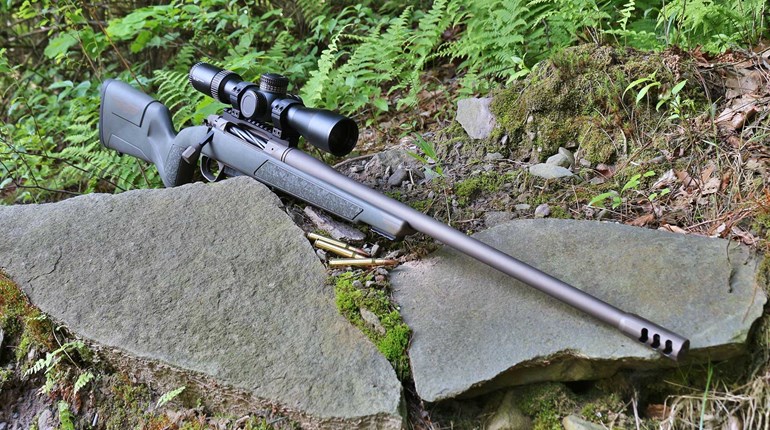
Any of us who have hunted for any amount of time has no problem defending his practice. At this point in life, we hunt because … we hunt. Period. We don’t know a life without hunting. We can’t imagine a future without hunting. So we make no apologies for it. If pressed, we can defend our pastime—we can conjure facts and figures when we encounter difficult people. But we rarely feel pressed to do so perhaps because at this point in life we simply don’t expose ourselves to people who challenge us; we choose not to surround ourselves with anyone we find disagreeable. Hunters are no different than other Americans, after all.
But a young adult who may seek to join our ranks does not enjoy such shelter. The life of any 21- or 30-year-old is filled with any number of disparate influences. At this point in life, a young woman is only just beginning to earn her first significant amount of disposable income; a young man is only just beginning to decide who or what he may become. With money in pocket and time to spare, it isn’t hard for a young adult to become immersed in a peer group that pulls one in different directions. And as anyone who has lived a number of years can attest, some influences challenge our beliefs more than others.
This perspective is important to keep in mind if one hopes to recruit a young adult who seeks our counsel.
That 25-year-old who pulls us aside at a barbeque, a wedding reception or a family reunion—he may be interested in joining our ranks but he’s keenly aware of pushback he’ll feel from his peer group when he announces to them he has become a hunter. Remember hunting is not as popular these days as we may like to admit, and therefore hunters are not numerous in society. None of that escapes the notice of non-hunters. A young man may feel the primal pull of the hunt and simultaneously be afraid to announce it to his friends.
So if you’re the one he approaches, whether you’re 50 or 30, understand he’s identified you as an experienced hunter. Don’t let the moment go to waste. In addition to marksmanship and fieldcraft, be sure to pass along the history of conservation in North America. Showing someone the ropes, in other words, also means showing him the facts and figures that prove hunting is healthy and good for wildlife and good for the environment—that it’s organic and sustainable, to use the parlance of our times.
Look to the talking points contained herein as starters. Anti-hunters claim there’s no way to simultaneously love an animal and hunt and kill and eat it; they claim hunting drives species extinct. But the history of conservation proves otherwise. Print out these facts, fold them and carry them in your wallet and give them to anyone you may deem worthy. Remember there is more to learn. Plenty of other talking points wait to be found by dedicated hunters and gun owners who recognize that these days the definition of a well-armed man has been expanded.
Never mind the other side’s facts. Don’t do their work. Go forth armed with the facts hunters should command and worry about weak arguments when they’re presented to you (and they will be weak, trust me). Coach your recruit to be prepared so she may go forth suitably armed to confront the nonsense arrayed against her newfound pastime.
Hunters Raise Funds to Support Wildlife
Since 1934 when the Pittman-Robertson Act was signed into law, hunters have raised more than $11 billion for wildlife management and restoration through voluntary excise taxes paid on the sale of firearms, ammunition and archery tackle. Hunters raise $700 million annually in P-R funds, which are distributed by the U.S. Fish and Wildlife Service to state agencies.
Hunters Self-Regulate
1895: Michigan and North Dakota sell first hunting licenses.
1900: Lacey Act prohibits trade of ill-gotten species, essentially banning market hunting.
1916: Migratory Bird Treaty Act establishes concept of game as international resource.
1934: Migratory Bird Hunting Stamp Act requires all waterfowl hunters 16 and older to buy a stamp regularly to raise funds to conserve and restore wetlands; ever since more than $1 billion raised has saved about 6 million acres across the United States; roughly 1.5 million Duck Stamps are sold each year.
1937: Federal Aid in Wildlife Restoration Act (Pittman-Robertson Act) provides funding for wildlife habitat, wildlife research and restoration, public access to wildlife, hunter education and more through a voluntary 11 percent federal excise tax paid by buyers of firearms, ammunition and archery tackle.
North American Model of Wildlife Conservation
In the 1950s, the North American Model of Wildlife Conservation, with tenets that may be traced to the mid-19th century, reaches full form. It rests on seven pillars:
1. Government holds wildlife in public trust; individual ownership of land does not convey ownership of wildlife on it; wildlife is owned by all until it is reduced to personal possession upon take.
2. Prohibitions on commerce in wildlife protect the resource from exploitation; commercial markets for wild game meat and dead animal parts are not allowed.
3. Wildlife is allocated by the democratic rule of law; every citizen enjoys right of access because hunting conveys many benefits.
4. Hunting opportunity exists for all under law; class and land ownership do not solely decide who maintains the privilege to hunt.
5. There shall be only non-frivolous use of wildlife; the killing of game must be done only for food, fur, self-defense and protection of property.
6. Wildlife is an international resource; it does not exist only within fixed political boundaries.
7. Science is recognized as the basis for informed management of wildlife; we appoint professionals to manage wildlife; we don’t rely on public polling to make regulations.
Hunters Save Species
Hunters have brought back species from the brink of extinction. Since 1900, every species “lucky” enough to have a hunting season placed on it has thrived.
Whitetails: In 1900 fewer than half a million remained; today there are at least 32 million.
Pronghorns: Only 50 years ago fewer than 12,000 remained; today more than a million roam the Western plains.
Elk: In 1900, fewer than 41,000 Rocky Mountain elk survived; today more than a million roam 23 states.
Ducks: In 1900, pitifully few remained due in no small part to market hunting; today more than 46 million fly across our skies thanks to regulated hunting.
Wild Turkeys: In 1900, this staple of the frontier numbered fewer than 100,000; today more than 7 million inhabit the country.




































